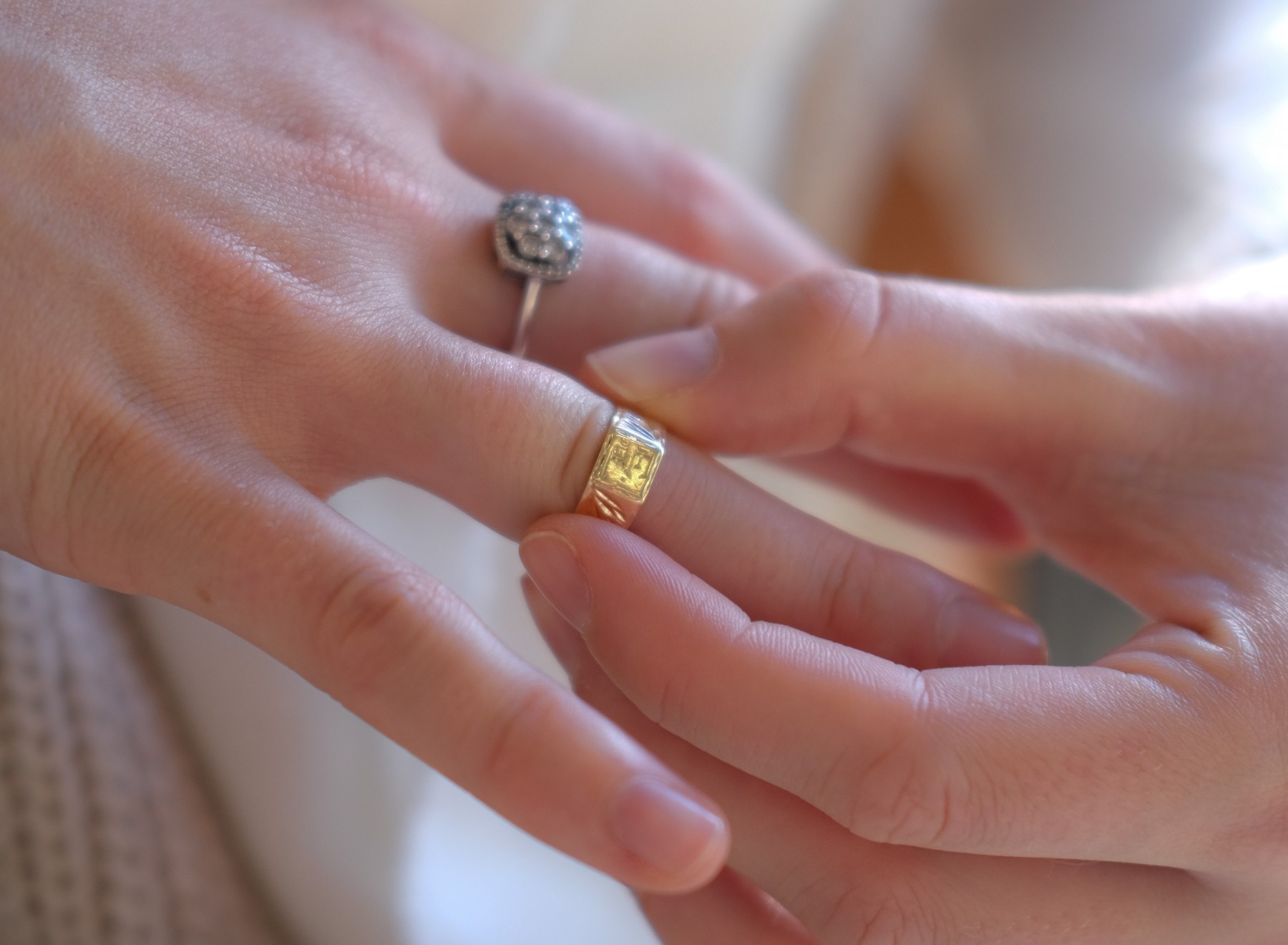BLUE STONES
Arguably the most popular amongst blue stones are sapphires and tanzanites. But, explains Anu Manchanda, different form of testing for treatments.
 Blue gemstones complement diamonds perfectly, especially when set against white metal, and this gem combination continues to be a popular classic.
There are many blue gemstones, from blue diamonds to blue spinel with topaz, iolite and lapis lazuli in between. The two most popular precious blue gems are sapphires and tanzanites; two highly contrasting stones in terms of history, origin, composition and treatment. While sapphires have been admired for over 2,000 years and initially became popular as much because of their alleged restorative powers as for their beauty, tanzanites are a relatively recent discovery admired purely for their brilliant deep indigo or violet hue.Stephen Webster Tanzanite Ring
Blue Sapphire
Blue sapphire is a member of the mineral species âcorundumâ, a sister to ruby. Historically sapphires were sourced in Kashmir, Myanmar and Sri Lanka but in recent decades Madagascar, Eastern Africa, Australia, Thailand and Cambodia have also become important sources. Sapphires occur naturally in a rainbow of colours, including much rarer pinks and yellows but the most common is blue with the colour being created by varying levels of trace elements of iron or titanium. Blue sapphires are usually cut in cushion and oval shapes with brilliant-cut crowns and step-cut pavilions to expose their rich colour. Â Blue sapphires typically have some inclusions and sapphires with extremely high clarity, are rare and very valuable. Inclusions generally seen are rutile needles called silk, boehmite needles, included crystals, fingerprint inclusions, growth zoning, and colour banding and zoning.Â
Tanzanite In contrast to the long-established attraction of sapphire, tanzanite is a remarkably modern phenomenon. Although it is believed tanzanite was formed over 500 million years ago when Mt. Kilimanjaro erupted, it took until 1967 for it to be discovered and recognised as a gem-quality crystal. Tanzanite is a brownish colour in its rough state but after heat treatment turns a glittering violet-blue and its deep intense colours have helped to make it a big success story. Tanzanites are always heat treated to change their colour although there are a few rare examples of tanzanites coloured by a quirk of nature. Clarity is never an issue and the clean stones encourage designs featuring large tanzanites complemented by diamond to demonstrate their fabulous colour. As with all natural resources there is only a finite amount available and the top quality, deeply colour-saturated tanzanite gemstones, which may be hues of indigo or violet, account for only 0.13% of mined tanzanite and are becoming extremely hard to source. One of the characteristics which sapphires and tanzanites therefore have in common is that it is accepted that, except in extremely rare circumstances, most of these gems coming onto the market will have been heat treated to make them saleable. AnchorCertâs task is to ensure that any treatments which need to be disclosed are identified, as they affect the value of the stone. As treatments become more sophisticated this requires an growing array of high-tech equipment used by an expert gemmologist. Treatment of gemstones to enhance their appearance is not a new phenomenon, and in fact it dates back to the 16th Century. Common gem treatments include heating, irradiation, bleaching, colourless or coloured impregnation, dying and coating. The wide and consistent use of some treatments over the years has eliminated the need for disclosure.
However, when treatments are applied, which can mislead the customer into thinking they are purchasing a far higher quality gemstone than they really are, disclosure is compulsory. The way that stones should be described and the treatments which should be disclosed are all clearly set out in the CIBJO âBlue Book on Coloured Gemstonesâ, which is widely respected as the worldwide âbibleâ for gemstone nomenclature.
Tanzanite is totally transformed visually by heat treatment which is carried out at relatively low temperatures. However, it is complementary to the natural process, placing the tanzanite in a more stable state and there is no evidence of structural or chemical alteration between heated and unheated tanzanite. Heat treatment of tanzanite is accepted practice and does not require disclosure.
Remaining natural sources of high quality sapphires are dwindling and as much as 95 per cent of the gem quality sapphire in the market today is treated in some way to improve their apparent quality. These range from relatively simple techniques to much more advanced methods. It is generally accepted that blue sapphires have been heat treated unless stated otherwise. AnchorCert will use a range of sophisticated equipment to check for treatments and identify and report the level of enhancement.
There are a variety of other techniques for sapphires to which the gemmologist has to be extremely alert as these have to be disclosed. Such treatments include heating with ti-diffusion whereby the diffusion of titanium gives a thin layer of colour to the surface of the gem.
In 2001, a new treatment known as Be-diffusion suddenly appeared whereby beryllium was used along with higher temperatures and a longer time for diffusion treatment. The result was a colour penetrating the entire depth of the stone making the treatment much more difficult to identify. In checking for diffusion treatments the gemmologist will look for tell-tale signs. If visual examination is not conclusive stones may have to be tested using a semi-destructive test.
In a much less sophisticated way, sapphires may also be enhanced by oiling; filling the fissures with oil or a similar substance to reduce the visibility of fissures thus improving the apparent clarity of the gem. Fracture filling with cobalt blue glass is an alternative. Both of these treatments are easy to detect as is surface cobalt coating which applies an additional layer to improve the apparent colour of the stone.
The need to adopt other practices to enhance tanzanite has only manifested itself in the past decade as supplies of suitable quality tanzanite have dwindled and suppliers have sought ways of enhancing remaining stocks.
AnchorCert saw an influx of cobalt coated tanzanites a couple of years ago but these are much less common since the issue was identified by the supply chain. This treatment takes the form of a surface cobalt coating which can improve the apparent colour of the tanzanite by as much as two grades.
The colour enhancement makes the stone seem of higher quality, and therefore more valuable than it was originally. A qualified gemmologist will identify this using just a 10x loupe as the colour may look unnaturally patchy, particularly when viewed from the crown and there will be iridescence to confirm initial suspicions.
Viewed under a microscope there will be signs of abrasion around the edges of the facets. This is a very different proposition from the irreversible heat treatment which has enhanced the natural colour of the tanzanite. Cobalt coating can enhance a stone by as much as two colour grades but is not permanent and will eventually peel away, leaving a very disappointed customer. This treatment should therefore always be disclosed. There are no doubt more treatments and synthetics under development already. AnchorCert gemmologists have to be alert to these and remain fully equipped to identify them both in terms of knowledge and resources.
Do you have any blue stones that need identifying and testing for treatment?
For more information on Gem reports T: 0871 871 6020 E: gem@theassayoffice.co.uk    W: www.anchorcert.co.uk
Treatment of gemstones to enhance their appearance is not a new phenomenon, and in fact it dates back to the 16th Century. Common gem treatments include heating, irradiation, bleaching, colourless or coloured impregnation, dying and coating. The wide and consistent use of some treatments over the years has eliminated the need for disclosure.
However, when treatments are applied, which can mislead the customer into thinking they are purchasing a far higher quality gemstone than they really are, disclosure is compulsory. The way that stones should be described and the treatments which should be disclosed are all clearly set out in the CIBJO âBlue Book on Coloured Gemstonesâ, which is widely respected as the worldwide âbibleâ for gemstone nomenclature.
Tanzanite is totally transformed visually by heat treatment which is carried out at relatively low temperatures. However, it is complementary to the natural process, placing the tanzanite in a more stable state and there is no evidence of structural or chemical alteration between heated and unheated tanzanite. Heat treatment of tanzanite is accepted practice and does not require disclosure.
Remaining natural sources of high quality sapphires are dwindling and as much as 95 per cent of the gem quality sapphire in the market today is treated in some way to improve their apparent quality. These range from relatively simple techniques to much more advanced methods. It is generally accepted that blue sapphires have been heat treated unless stated otherwise. AnchorCert will use a range of sophisticated equipment to check for treatments and identify and report the level of enhancement.
There are a variety of other techniques for sapphires to which the gemmologist has to be extremely alert as these have to be disclosed. Such treatments include heating with ti-diffusion whereby the diffusion of titanium gives a thin layer of colour to the surface of the gem.
In 2001, a new treatment known as Be-diffusion suddenly appeared whereby beryllium was used along with higher temperatures and a longer time for diffusion treatment. The result was a colour penetrating the entire depth of the stone making the treatment much more difficult to identify. In checking for diffusion treatments the gemmologist will look for tell-tale signs. If visual examination is not conclusive stones may have to be tested using a semi-destructive test.
In a much less sophisticated way, sapphires may also be enhanced by oiling; filling the fissures with oil or a similar substance to reduce the visibility of fissures thus improving the apparent clarity of the gem. Fracture filling with cobalt blue glass is an alternative. Both of these treatments are easy to detect as is surface cobalt coating which applies an additional layer to improve the apparent colour of the stone.
The need to adopt other practices to enhance tanzanite has only manifested itself in the past decade as supplies of suitable quality tanzanite have dwindled and suppliers have sought ways of enhancing remaining stocks.
AnchorCert saw an influx of cobalt coated tanzanites a couple of years ago but these are much less common since the issue was identified by the supply chain. This treatment takes the form of a surface cobalt coating which can improve the apparent colour of the tanzanite by as much as two grades.
The colour enhancement makes the stone seem of higher quality, and therefore more valuable than it was originally. A qualified gemmologist will identify this using just a 10x loupe as the colour may look unnaturally patchy, particularly when viewed from the crown and there will be iridescence to confirm initial suspicions.
Viewed under a microscope there will be signs of abrasion around the edges of the facets. This is a very different proposition from the irreversible heat treatment which has enhanced the natural colour of the tanzanite. Cobalt coating can enhance a stone by as much as two colour grades but is not permanent and will eventually peel away, leaving a very disappointed customer. This treatment should therefore always be disclosed. There are no doubt more treatments and synthetics under development already. AnchorCert gemmologists have to be alert to these and remain fully equipped to identify them both in terms of knowledge and resources.
Do you have any blue stones that need identifying and testing for treatment?
For more information on Gem reports T: 0871 871 6020 E: gem@theassayoffice.co.uk    W: www.anchorcert.co.uk
Your item has been added to the basket
You need to create an account, or login before you can add this item to your basket.












